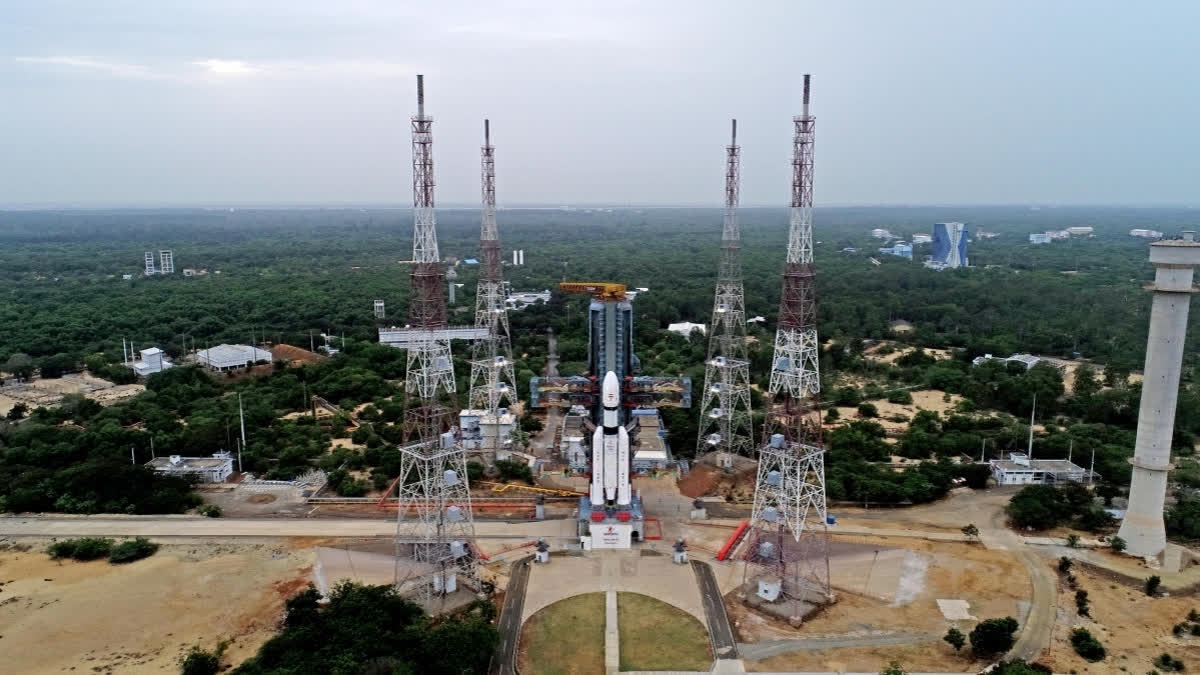Bengaluru/Hyderabad: Stepping into the realm of extraterrestrial exploration, in a strategic departure from conventional design practices, the Indian Space Research Organisation (ISRO) has chosen to adopt a "failure-based design" approach for its upcoming 'Chandrayaan-3' mission which has been scheduled for Friday, July 14 at 2:35 pm. The decision reflects ISRO's determination to learn from its previous setbacks and maximise the probability of mission success.
Following the Chandrayaan-2 mission, which encountered an unfortunate anomaly during the soft landing phase, ISRO initiated a thorough analysis of the mission's challenges. Recognizing the invaluable insights gained from both successes and failures, the space body decided to embrace a design philosophy that incorporates learning from past missions. By incorporating a "failure-based design" strategy, ISRO aims to identify and address potential failure points early in the mission development process.
Background: Chandrayaan-2 mission was a highly complex mission, which represented a significant technological leap compared to the previous missions of ISRO. It comprised of an Orbiter, Lander, and Rover to explore the unexplored South Pole of the Moon.
On August 20, 2019, Chandrayaan-2 was successfully inserted into lunar orbit. While orbiting the moon in a 100 km lunar polar orbit, on September 02, 2019, Vikram Lander was separated from the Orbiter in preparation for landing. Subsequently, two de-orbit manoeuvres were performed on Vikram Lander so as to change its orbit and begin circling the moon in a 100 km x 35 km orbit. Vikram Lander's normal performance was observed up to an altitude of 2.1 km. Subsequently, communication from the lander to the ground stations was lost.
With the moon's unforgiving gravitational embrace, Vikram Lander crash-landed on the moon's surface after its guidance software went kaput, according to ISRO sources. To sum up, the problem in Chandrayaan -2 was that the ability to handle parameter dispersion was very limited.
Also read: Explained: India's ambitious lunar mission-Chandrayaan-3
What has changed? The primary objective of Chandrayaan-3 is to conduct a soft landing on the lunar surface. A soft landing on the moon is a huge challenge. So far, the then-Soviet Union, the United States, and China are the only countries that have successfully carried out soft landings on the moon. In the absence of an atmosphere to cushion the descent, achieving a gentle lunar touchdown becomes an extraordinary challenge, requiring a delicate choreography of precision and finesse.
S Somnath, Chairman of ISRO explained, "So, what we did this time was to simply expand that further, look at what are things that can go wrong. So, instead of a success-based design in Chandrayaan-2, we are doing a failure-based design in Chandrayaan-3. What all can fail, and how to protect it. This is the approach we have taken."
"We expanded the area of landing from 500m x 500m to four km by 2.5 km. It can land anywhere, so it doesn't limit you to target a specific point. It will target a specific point only in nominal conditions. So, if the performance is poor, it can land anywhere within that area," he added.
According to the ISRO chief, another critical area of focus was the power system. "Chandrayaan-3 also has more fuel so it has more capability to travel or handle dispersion or move to an alternate landing site. The Vikram Lander now has additional solar panels on other surfaces to ensure that it generates power no matter how it lands," Somnath said.



